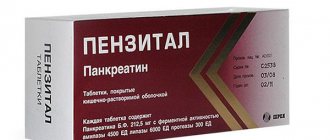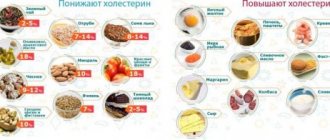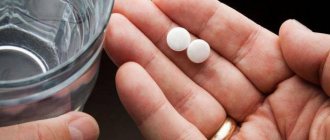L-carnitine is a sports supplement to the athlete’s basic diet. Due to its participation in fat metabolism and metabolic processes, it is positioned as a fat burner. While taking l-carnitine, the athlete feels a distinct surge of strength due to the release of energy from fat cells, endurance increases, which has a beneficial effect on training performance and gradual fat burning.
The supplement is available in powder, liquid, ampoule and tablet forms (the rate of absorption of the product varies depending on the form). It is also impossible not to note such a novelty in the sports nutrition market as protein and energy bars with the addition of l-carnitine.
Effects of L-Carnitine on the body
L-carnitine, as already mentioned, is synthesized by the body.
It is actively involved in many processes, including regulating lipid metabolism. By now, on the shelves of pharmacies or sports nutrition stores you can find carnitine in the form of powder, capsules or drinks, as a dietary supplement. Being a natural substance, l-carnitine has a gentle effect on the body, having the following effects:
- promotes rapid muscle recovery after training;
- reduces the production of lactic acid in the muscles, thereby relieving pain after intense exercise;
- speeds up metabolism;
- normalizes digestive processes, promotes better absorption of nutrients;
- stimulates brain function, increases concentration, performance, and overall endurance of the body.
The supplement can have a positive effect only if the person follows the principles of proper and healthy nutrition.
Interaction with other drugs and hemodialysis procedures
Interactions with medications are considered safe due to the fact that the drug is a dietary supplement . It is also believed that the drug does not interact with other medications, and therefore there are no obstacles to taking it. In any case, you should consult your doctor before taking the drug.
There is not yet enough research according to all the rules of science, but doctors note the effect of L-Carnitine on patients undergoing hemodialysis . There is no single answer and no work from which to draw conclusions. Doctors advise eating more red meat.
Hemodialysis
— a method of extrarenal blood purification for acute and chronic renal failure. During hemodialysis, toxic metabolic products are removed from the body and disturbances in water and electrolyte balances are normalized.
It is believed that simultaneous use of the drug with lipoic acid and anabolic drugs enhances the fat burning effect . This is not a statement, and drugs affect the body of an individual person differently.
Drinking alcohol at the same time as levocarnitine will not cause harm to health , except for the harm caused by alcohol. There's no definitive pros and cons here, but the effects of alcohol on the liver and the liver's involvement in the process you're trying to improve may be related.
Indications for use
There are no medical indications for taking this dietary supplement. To normalize weight and treat various diseases and pathologies, specialists usually use various medications.
L-carnitine may be beneficial during regular exercise. It will charge the body with energy and give strength, which will be enough for a whole intense session. At the same time, it will relieve muscle pain, which often causes a lot of inconvenience for people who regularly visit gyms.
Fitness instructors advise beginners who quickly get tired during training to drink l-carnitine. This will to some extent facilitate the functioning of the respiratory and cardiovascular systems.
What properties are inherent in L-carnitine?
Today the properties of this substance have been sufficiently studied. They are used by ordinary people, athletes, and people who dream of losing weight. Carnitine:
- has anabolic and cytoprotective effects. Accelerates tissue regeneration, promotes the growth of muscle mass and muscle strength, enhances performance;
- increases the body's endurance by converting fat into energy;
- improves memory and thinking ability, reduces symptoms of depression and pain;
- optimizes reproductive function, stimulates spermatogenesis.
- improves vision function - inhibits dystrophic changes in fiber vessels;
- utilizes “waste” and toxic metabolites accumulated in cells during fat oxidation;
- reduces the formation of lactic acid;
- assists in supplying the myocardium with oxygen;
- slows down aging.
During the process of transporting acids, fats are not burned. Only energy supply to muscle cells occurs. Therefore, it is worth remembering that L-carnitine for weight loss is used only with regular, intense training.
+ 14.6 bonus rubles
Be FirstL-Carnitine 700Carnitine730 rub.
+ 26.72 bonus rubles
Optimum NutritionL-Carnitine 500 TabsCarnitineRUB 1,336
+ 25 Bonus rubles
Be FirstL-Carnitine 3300 20 ampoules Carnitine concentrate RUB 1,250
+ 31.8 bonus rubles
MaxlerL-Carnitine 2000Carnitine concentrate1,590 rub.
Harm of L-Carnitine, contraindications
When L-carnitine is used correctly, there are no side effects. The main thing is that there are no contraindications to taking dietary supplements, which include:
- pregnancy and lactation;
- thyroid diseases, hormonal disorders;
- oncological diseases;
- diabetes;
- autoimmune diseases;
- heart failure in any form;
- postoperative recovery period;
- rehabilitation after heart attack, stroke;
- dyspeptic disorders;
- diseases of the gastrointestinal tract;
- individual intolerance to the component;
- epilepsy;
- pathologies of the liver and kidneys.
In any case, only a specialist can say unequivocally whether l-carnitine can be used or not. It is necessary to assess your overall health status, existing chronic diseases and many other factors.
Forms of release of dietary supplements
L-carnitine is available in the form of powder, capsules or ready-made drinks. In addition, it can be in pure form or in combination with other additives, vitamins, and substances. Each type has its own characteristics, but in terms of effectiveness they differ little from each other. Therefore, the choice depends only on personal preferences. It is more convenient to take a ready-made drink with you to the fitness room, since you can drink it throughout your workouts. And at home - capsules or powder. Let's look at each release form in more detail.
Pure 100% L-Carnitine
Pure L-carnitine is usually available in powder form. It is recommended to dilute it in water and drink it before intense training. It helps increase endurance and adds energy to the body.
The powder is usually packaged in portions in small boxes weighing 100-200 grams, depending on the manufacturer.
The finished drink has a specific bitter taste and an unusual smell. That is why carnitine in its pure form is rarely used. Usually a flavoring agent and a natural flavor enhancer are added to it.
L-Carnitine tartrate
Tartrate is a combination of pure l-carnitine and tartaric acid. They are mixed in a ratio of 70% to 30%, ensuring better absorption of the components by the body:
- helps accelerate metabolic processes, neutralizes lactic acid in muscles, prevents pain;
- tartaric acid helps dilate blood vessels, improve the functioning of the cardiovascular system, and relieves fatigue after intense training.
The product is designed specifically for professional athletes. Available in capsule or powder form.
Acetyl L-Carnitine
Acetyl L-carnitine comes in capsule form for oral administration. They have the following positive effects:
- improve metabolic processes occurring in the body;
- help increase brain activity;
- reduce the level of fatigue after intense training;
- removes excess fluid from the body.
Capsules are used mainly by professional athletes during intense training under high loads. For those who are just starting to work out in the gym, you can choose a dietary supplement with a lower concentration.
Propionyl L-Carnitine
The dietary supplement Propionil is available in capsule, tablet or powder format. It is also a type of natural substance, but it contains another component - glycine:
- l-carnitine has the same effects: improves metabolic processes, relieves fatigue after training;
- Glycine has a positive effect on the psycho-emotional state: it helps improve sleep, relieves insomnia, and relieves nervous tension.
This combination may be useful for people to lose weight. Making a drastic lifestyle change and adding exercise to your daily routine can be stressful. In this case, taking the dietary supplement Propionil in combination with working with a psychologist will have a positive effect on your well-being.
L-Carnitine fumarate
The dietary supplement fumarate is most often available in the form of a ready-made drink or tablets for oral administration. It is also used during intense training to restore strength and energy, relieve tension and pain.
This dietary supplement should not be used for pathologies of the liver and kidneys. In addition, they drink it in courses as prescribed by a specialist. Chronic use may lead to side effects.
In recent decades, there has been a steady increase in the number of patients with chronic cerebrovascular diseases [1, 2, 7, 8]. ICD-10 identifies “chronic cerebral ischemia” (CHI), which in terms of prevalence occupies a leading place in the structure of cerebrovascular diseases. In the domestic literature, instead of CCI, the term “dyscirculatory encephalopathy” is often used, which means a disease with progressive multifocal diffuse brain damage, manifested by neurological disorders of varying degrees, caused by a reduction in cerebral blood flow, repeated transient ischemic attacks or previous cerebral infarctions [6]. Depending on the severity of clinical manifestations in the domestic literature, it is customary to distinguish 3 stages of chronic cerebral circulatory failure [4].
CCI is a heterogeneous pathological process. Considering the complexity of the pathogenetic mechanisms of CCI, as well as a number of main clinical manifestations, it is not possible to reduce the choice of therapeutic intervention to any single medicinal or physical factor. In recent years, the possibility of using L-carnitine has attracted increasing interest in clinical practice.
Carnitine was first synthesized in 1960; in 1962, the role of carnitine was determined as the main transporter of long-chain fatty acids into mitochondria through their inner membrane [9].
It is now known that the efficiency of mitochondria is largely determined by the amount of the fatty acid transporter, L-carnitine [11]. Carnitine is formed endogenously in the human body (with the participation of vitamins C, B3, B6, B12, B9, iron, lysine, methionine and a number of enzymes), and also comes from meat foods. With a lack of carnitine, the oxidation of fatty acids in mitochondria slows down, resulting in a decrease in ATP production. The less carnitine (and its esters) is contained in a person’s blood plasma, the lower his performance. Brain tissue is rich in carnitine, and its concentration is quite high in various parts of the central nervous system, differing in their functional activity (hypothalamus, cerebellum, cortex, spinal cord), while its content in some other tissues and blood plasma is low [13].
There are 2 isomers of carnitine - dextro- and levorotatory (D- and L-forms), which have different chemical and biological properties. It is believed that L-carnitine is present in the human and animal body, which is biologically active and safe to use [5].
One of the main functions performed by L-carnitine in the body is to ensure the transport of free fatty acids from the cytosol to the mitochondria. L-carnitine is an essential transporter of long-chain fatty acids across the inner mitochondrial membrane to the site of oxidation and energy production in the form of ATP [10]. According to their chemical properties, free fatty acids are metabolically inert and cannot undergo biochemical transformations until they are activated. Activation of free fatty acids occurs on the outer surface of the mitochondrial membrane with the participation of coenzyme A in the presence of magnesium ions and ATP. Acetyl coenzyme, located on the outer surface of the membrane, catalyzes reactions during which L-carnitine forms acetylcarnitine intermediates. L-carnitine ensures the entry of activated free fatty acids into the mitochondria, ensuring their penetration through the inner layer of the membrane. Fatty acids entering the mitochondria in this way are used in the beta-oxidation system, which in its energy production efficiency is close to the tricarboxylic acid cycle (Krebs cycle) [15].
With age, the concentration of carnitine in the body decreases, resulting in disruption of the metabolic pathways responsible for energy production. It was shown that carnitine intake in elderly patients caused a progressive increase in total muscle mass and a significant decrease in physical and mental fatigue compared with the placebo group [21].
A number of studies provide information about the effectiveness of L-carnitine in acute cerebrovascular accidents [3]. One randomized controlled clinical trial showed that regular intake of L-carnitine reduces the severity of physical and mental fatigue and improves cognitive abilities in centenarians (aged 100 years or more) [17]. It is of interest to study the effectiveness of the use of L-carnitine in the initial forms of CCI.
The purpose of this study is to study the effectiveness of L-carnitine in patients with stage 1 and 2 CCI.
Material and methods
The comparative parallel clinical study included 60 patients diagnosed with stage 1-2 CCI, including 22 men and 38 women, aged from 42 to 74 years (average - 61.2±8.2 years).
Patients aged from 41 to 74 years were selected, undergoing outpatient or inpatient examination, whose condition met the ICD-10 criteria (cerebrovascular disease, CCI).
The study did not include patients with stage 3 CCI, dementia, a history of stroke or myocardial infarction, other (non-vascular) diseases of the central nervous system, the presence of mental illness, a history of gastric or duodenal ulcers, diabetes mellitus, liver and kidney failure , diseases of the thyroid gland, severe insufficiency of blood supply, cancer. Patients who were taking or had taken nootropic and neurometabolic drugs, as well as drugs affecting systemic blood flow less than 4 weeks before inclusion in the study, were also excluded.
All patients were informed about the procedures and treatment plan and gave written consent to participate in the study. The work was approved by the ethical committee of the Russian National Research Medical University. N.I. Pirogov.
All patients received basic treatment for CCI, including the prescription of antihypertensive and antiplatelet drugs. But depending on the characteristics of the therapy in general, the patients were divided into 3 groups. Group 1 included 20 patients who received 1000 mg of L-carnitine (the drug Carnitone) per day for 60 days. In group 2 (20 patients), the drug was prescribed at a dose of 2000 mg per day for 60 days. Group 3 was the control group, in which only basic therapy was used for 60 days.
All patients underwent a somatic and neurological examination, which was supplemented by clinical and biochemical blood tests, duplex scanning of the precerebral arteries, transcranial Doppler ultrasound and magnetic resonance imaging (MRI). A number of scales were also used: the adapted quantitative neurological scale of A.I. Fedina, a brief mental status assessment scale (Mini Mental State Examination, MMSE), a “number search” test (Schulte tables) and a subjective assessment scale for asthenia MFI-20.
Patients in the selected groups did not differ in gender and age, as well as in concomitant diseases.
In particular, all examined patients had a history of arterial hypertension, and the groups did not differ in the duration of this disease, baseline systolic and diastolic blood pressure, and heart rate. In all three groups studied, approximately equal numbers of patients received antihypertensive therapy.
In the studied groups, atherosclerosis (cardiosclerosis, damage to the carotid arteries), obesity and lipid disorders occurred with almost the same frequency.
The results of the study were subjected to statistical analysis using SYSTAT v.10.2 and Statistica v.6.0. Comparison of average values was carried out using the Student's test - two modifications of this test were used for independent and dependent samples. Nonparametric statistical methods were used—U-test using the Mann-Whitney method. The critical value of the significance level was taken equal to 5% ( p
<0,05).
results
All 60 patients included in the study completed the full course of treatment. The patients presented complaints characteristic of clinical manifestations of stage 1-2 CCI. After a course of treatment in the 1st and 2nd groups of patients, positive dynamics were revealed in the form of regression of the majority of complaints presented before treatment. Using a two-sided Fisher test, the number of patients in groups with various complaints before and after treatment was compared (Table 1)
.
Given in table. 1
The results indicate that the considered indicators changed significantly only in two main groups.
Thus, in these groups, by the time the course of treatment was completed, the frequency of complaints of weakness, decreased performance, memory impairment, headache, dizziness, and unsteadiness of gait significantly decreased ( p
<0.05).
There were no significant changes in the indicators “tinnitus”, “mood disturbance” and “sleep disturbance” ( p
>0.05).
In the control group, there were no significant changes in the frequency of complaints before and after treatment ( p
>0.05).
A significant difference in the dynamics of complaints in the two main groups of patients was only with memory deterioration; in group 2, its positive dynamics were more pronounced ( p
<0.05).
The dynamics of other complaints in the two main groups of patients did not differ significantly ( p
>0.05).
Analysis of the dynamics of neurological disorders after a course of treatment based on the adapted quantitative neurological scale of A.I. Fedina showed positive changes in individual neurological symptoms and syndromes in all three groups. To compare data before and after treatment, the paired Wilcoxon test was used (Table 2)
.
From the table 2
it can be seen that significant changes in indicators were observed in both main groups for the parameters “general cerebral symptoms”, “autonomic disorders” and “total score” (
p
<0.05).
There was no significant difference in the severity of the dynamics of neurological syndromes between these groups ( p
>0.05).
In patients in the control group, no significant dynamics of neurological syndromes were observed after treatment ( p
>0.05).
Compared to the control group, both in groups 1 and 2, the dynamics of cerebral and autonomic symptoms, as well as the total score, were more pronounced ( p
<0.05).
Data from the neuropsychological examination of patients on the MMSE scale before and after treatment are given in Table. 3
.
When comparing neuropsychological testing indicators at the beginning of the study (1st visit), no statistically significant differences were found between the groups ( p
>0.05). This statement applies both to individual subscales of the test and to the overall score obtained by patients using this method.
As can be seen from table. 3
, in group 1, statistically significant differences after treatment were detected in the total score of the MMSE scale and in the “concentration” and “memory” subscales (
p
<0.05).
In group 2, along with these indicators, after treatment, scores on the “reproduction” subscale improved ( p
<0.05), and the overall score on the scale was significantly higher compared to group 1 (
p
<0.05).
When comparing data from the main groups with the control group, more pronounced dynamics were noted in the subtests “concentration of attention” and “memory”, as well as the total score of the MMSE scale ( p
<0.05).
In the three studied groups of patients, a comparison was made using the paired Wilcoxon test of the speed of filling out Schulte tables before and after treatment (Table 4)
.
As can be seen from table. 4
, during treatment, in patients of groups 1 and 2, the time spent working with all 5 tables decreased compared to the baseline, but only the time spent working with the 5th table improved statistically significantly (
p
<0.05).
At the same time, more pronounced dynamics of the average time to complete five tests was in the 2nd group of patients compared to the 1st ( p
<0.05).
In the control group of patients, test scores remained virtually unchanged. When comparing the indicators of the main groups with the control, there was significant dynamics in the main groups when working with the 5th table and in the average time for completing five tests ( p
<0.05).
Comparison using the paired Wilcoxon test of the severity of asthenic disorders recorded according to the subjective asthenia questionnaire before and after treatment in the three examined groups of patients is given in Table. 5
.
From the table 5
It can be seen that in groups 1 and 2 there was a statistically significant change in the total score and all subtests of the scale compared to the initial level (
p
<0.05).
In patients of these groups, the level of general, physical and mental asthenia decreased, activity and level of motivation increased. In patients of group 2 compared to group 1, the dynamics of general asthenia and the total score on the scale were more pronounced ( p
<0.05).
In the control group of patients who received only basic therapy, there was a tendency to improve scores on the “activity” subtest, which did not reach statistical significance ( p
>0.05) and is apparently associated with additional procedures.
When comparing the indicators of the main groups with the control group, the dynamics of the total score and all subtests of the scale in the main groups were more significant ( p
<0.05).
The studied drug showed a good level of safety and tolerability. One patient of the 2nd group had increased irritability and sleep disturbances (insomnia, sleep with frequent awakenings), which regressed within the 1st week. In 1 patient from group 1, the headache intensified, which coincided with a severe traumatic situation in the family. Symptoms regressed when tranquilizing drugs were added to treatment. In 1 patient in the control group, headache and dizziness increased due to changes in blood pressure (the patient refused to take antihypertensive drugs) and a traumatic situation. After normalization of the emotional background and blood pressure numbers, the symptoms regressed.
Discussion
Pharmacotherapeutic effects for any form of ischemic brain damage should be as comprehensive as possible and aimed not only at restoring normal blood flow in the affected area, but also eliminating (or weakening) the “ischemic cascade”, i.e. a complex of neurometabolic, neurotransmitter, neurotrophic and other reactions that directly determine the development of degenerative-destructive changes and the formation of neurological disorders.
The symptom complex of clinical manifestations of CCI included cerebral symptoms characteristic of this disease, vestibulo-cochlear disorders, pyramidal and corticonuclear insufficiency, autonomic and coordination disorders. All patients were characterized by the presence of cognitive impairment; some patients had psychoemotional disorders in the form of anxiety and depression. All studied patients had severe asthenic symptoms.
The study revealed a significant effect of carnitone on the asthenic symptom complex in CCI. The main neurological symptoms of the 1st stage of CCI are essentially expressed in asthenic syndrome. Headaches and a feeling of heaviness in the head, dizziness, general weakness, increased fatigue, emotional lability, sleep disturbances, decreased performance - this entire set of complaints is characteristic of the initial stage of CCI. Taking carnitone increased the performance and daily activity of patients, thus confirming that disturbances in mitochondrial homeostasis can serve as the basis for the development of asthenic symptoms [16]. The positive effect of carnitone was clearly visible in a significant improvement in cognitive functions (based on the results of the MMSE scale and the Schulte test). At the same time, a dose-dependent effect of the drug was revealed. In the 1st group, when taking 1000 mg of carnitone per day, statistically significant differences after treatment were revealed in the total score of the MMSE scale and the “concentration” and “memory” subscales, while in the 2nd group (taking carnitone at a dose of 2000 mg per day), along with these indicators, after treatment the indicators of the “reproduction” subscale improved, and the overall score on the MMSE scale was significantly higher.
A similar dose-dependent effect of carnitone was noted when analyzing the performance of the Schulte test. More pronounced dynamics of the test in terms of the average time to complete five tests was in the 2nd group of patients compared to the 1st.
Such effects are associated with the fact that in brain tissue, L-carnitine transports acetyl residues from mitochondria to the cytosol, thus participating in the synthesis of acetylcholine and acetylcarnitine [18, 19]. The neurobiological effects of acetylcarnitine include direct effects on energy and phospholipid metabolism, cellular macromolecules (such as neurotrophic factors and neurohormones), synaptic morphology and the transmission of numerous neurotransmitters [20, 22]. The use of carnitone leads to an increase in the content of L-carnitine in tissues, restores carnitine losses and reduces the severity of symptoms in ischemic damage [12, 14].
How to Take a Weight Loss Supplement
The method of taking l-carnitine largely depends on the form of release. But the general recommendations are as follows:
- Select the necessary drug based on training intensity, individual indicators and characteristics.
- Take half an hour before training. Its effect begins to appear approximately 20 minutes after administration, there is an increase in energy, and the disappearance of fatigue, like after coffee. The effect lasts up to two hours.
- Combine the dietary supplement with proper nutrition and regular physical activity. Carnitine alone will not help you lose weight.
Let's take a closer look at the instructions for use for each of the release forms.
Liquid L-Carnitine
Liquid L-carnitine is usually available in the form of 0.3-0.5 liter drinks. It tastes like regular lemonade, only without sugar and artificial additives. This format is very convenient; you can take the bottle with you to training and drink it 20-30 minutes before class. The main thing is to pay attention to the dosage. in some cases it is necessary to drink the bottle completely, in others it is necessary to divide it into 3-4 doses.
You can make a liquid solution yourself. To do this, a bag of powder is diluted with 300-500 ml of water. But it is advisable to drink this solution at a time; it is not recommended to store it.
L-Carnitine capsules
Capsular L-carnitine is the most convenient form to take. It is easy to carry and does not need to be diluted beforehand. Typically, such dietary supplements also contain other elements: vitamins, minerals, and other substances. But they are broken down more slowly by the body, so the capsules are drunk 40-60 minutes before training, washed down with clean drinking water. It is not recommended to combine them with coffee or tea.
The number of capsules to take depends on the dosage. Usually one tablet is one daily requirement.
Tablet product
Pure L-carnitine is usually produced in tablets. They, like capsules, are taken orally 40-60 minutes before training, washed down with clean drinking water. The number of tablets to take is also determined based on the concentration of the active substance.
Tablets are rarely found on shelves because they are considered to be less effective than capsules or a drink.
L-Carnitine powder
A drink is prepared based on powdered l-carnitine. It is diluted with a small amount of water (150-200 ml) and drunk half an hour before training. This solution has a bitter taste and a specific smell, which not everyone likes. Therefore, it is usually not used, replaced with a ready-made drink or capsules.
Pure 100% L-Carnitine
Pure L-carnitine is a product with a high concentration of active substance. It is taken a quarter of an hour before training, diluting the powder with 100 ml of clean drinking water.
Pure L-carnitine is usually taken by professional athletes. It is not recommended for those who are just starting to exercise, as it may cause side effects.
L-Carnitine tartrate
As already mentioned, l-carnitine tartrate is available in powder or capsule form. One sachet containing the daily requirement is diluted with 100-150 ml of water and drunk half an hour before training.
Capsules are also taken before training, but at least 40 minutes before, as they require more time to be absorbed.
Acetyl
Acetyl capsules are usually taken three times a day, not necessarily before training. For example: in the morning, with lunch and before evening training. This biological supplement has a rather cumulative effect, improving overall well-being and increasing energy levels.
Propionil
Propionyl is a combination of l-carnitine and glycine. As already mentioned, the second component has a mild sedative, calming effect. Therefore, it is recommended to drink it in the evening.
Like other types of l-carnitine, propionil is taken orally before training. It is recommended to choose it in the form of a drink, so the supplement is better absorbed by the body.
Fumarate
The dietary supplement Fumarate is used regardless of the time of day or training regimen. It has a cumulative effect, so it is recommended to drink L-carnitine in this form 3-4 times daily. The course should last no more than a month, the break between courses should be at least two weeks.
Daily dose of product
The daily dose depends on several parameters:
- height and weight of a person;
- training intensity;
- number of classes weekly;
- presence of concomitant diseases and contraindications.
Typically, l-carnitine is used as follows:
- High concentration liquid drink - 30-50 ml daily.
- Low concentration liquid drink - 300-500 ml before training.
- Pure carnitine tablets - from 2 to 5 pieces daily.
- Capsules - 1-3 daily.
- Powder - 1-5 grams, diluted with water, before training.
Only a specialist can determine the exact dosage and dosage regimen.
Combination with other drugs
L-carnitine combines well with other dietary supplements and vitamins D and B, ascorbic acid, various micro- and macroelements for daily intake (magnesium, zinc, calcium, etc.).
However, the dosage of L-carnitine must be reduced when used together with glucocorticoids - steroid hormones.
L-carnitine is not recommended to be taken in conjunction with drug treatment. Dietary supplements can enhance or weaken the effect of drugs. As already mentioned, the main thing is to consult with a specialist.
About the benefits of L-carnitine
L-carnitine participates in universal biochemical processes in the body. This feature allows us to talk about it as a useful supplement and use it in the widest range of medicine, including cosmetology and the sports field. It is worth talking about the benefits of L-carnitine and what it is needed for.
Carnitine for the heart:
- being an antioxidant, it protects heart cells from ischemia, hypoxia and the effects of stress;
- lowers cholesterol levels in the bloodstream.
- increases the rate of lipid breakdown;
- prevent the formation of blood clots;
- improves cardiomyocyte metabolism and preserves ATP reserves;
Carnitine for the brain:
- has antidepressant properties, enhances the effect of serotonin;
- improves memory, attention, increases learning ability.
- increases resistance to emotional stress and overload;
- improves sleep;
Carnitine preparations in sports medicine:
- maintain an optimal physiological state and provide the muscles with the necessary energy during heavy physical exertion;
- increase efficiency and endurance during training.
- increase muscle mass through the use of fat depots;
For the body as a whole, L-carnitine will give you a boost of energy throughout the day, create a good mood and increase confidence in your abilities.
How to make taking a supplement more effective for weight loss
You can enhance the effect of a dietary supplement in the following ways:
- Drink 1.5-2 liters of clean water daily.
- Create a complete, varied diet in accordance with the body’s needs for calories, proteins, fats, carbohydrates and various microelements.
- Create a training program. It is important to find your own type of physical activity. For some, moderate exercise is suitable: swimming, stretching, yoga, while for others, intense exercise: strength training in the gym, crossfit or various types of martial arts.
Various cosmetic procedures will also have a positive effect: scrubs, wraps, massage, contrast shower. All this will help maintain the firmness and elasticity of the skin while losing weight.
Side effects
Side effects from taking L-carnitine occur with an overdose. This is why it is so important to find your product and accurately select its quantity.
Side effects include:
- sleep disturbance, insomnia;
- increased excitability, irritability;
- symptoms of indigestion, disorders of the gastrointestinal tract;
- in case of an allergic reaction or individual intolerance: redness, itching, rash.
It is recommended to introduce the dietary supplement gradually: first a drink before training, then, if the body responds well, capsules for daily use.
The body's need for L-carnitine
Sources of amino acids (lysine and methionine) are foods consumed and proteins from your own muscle tissue. But, only 100–300 mg of this substance per day comes with food, while an adult of average build needs to consume 300–600 mg of carnitine during this period. With an increase in energy consumption, various diseases, and pregnancy, the need for it increases 5-10 times and amounts to 2000 mg or more.
The liver produces 25% of the daily requirement of the substance; the rest of L-carnitine is obtained from foods:
- fish (red, rich in amino acids and PUFAs - Omega-3)
- meat of domestic and wild animals, poultry;
- dairy products, including cheeses;
- avocado.
There is a problem for fitness - the low bioavailability of pure levocarnitine when eating (only 5 - 15%). Then how to take L-carnitine? Athletes need to consume up to 4 g of carnitine from food and supplements to increase the amount of the substance by 10%.
It is possible to stimulate more effective use of the drug if you combine it with carbohydrates (increasing the pool by 21%). This combination is suitable for swimmers, marathon runners and athletes accustomed to consuming carbohydrates.
Consumer Reviews
Consumers who regularly use L-carnitine before training note that exercise has become much easier to tolerate. There is a surge of strength and energy, and increased endurance.
The following brands are recommended for regular use:
- UNS L-Carnitine 1000;
- Biotech L-Carnitine 100000;
- Liquid;
- ExtrifitCarni;
- PowerProCarnitine 5000;
- Carnitine 5000.
The cost of supplements varies. One ready-made drink can cost about 30-50 rubles, and a course of capsules or powder can cost from 900 to 2500 thousand rubles.
According to reviews, carnitine can be a good aid in losing weight, especially during training and classes with a trainer. The main thing is to find your release form, select the required dosage, and take it strictly according to the instructions.








